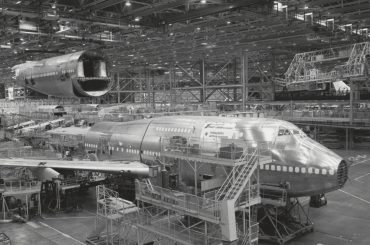My family and I flew on Qantas from Sydney to LA and back in May for a short holiday.
Remarkably, both flights left on time, they weren’t cancelled due to the discovery of rats on the aircraft, we didn’t divert into Noumea on the way home, all our bags came out at both ends unscathed, and we experienced no engine failures, or any other mechanical mishaps.
For all the misadventures of Qantas in the media of late, the flights were a showcase for all that is good about Qantas. Both flights were on A380s, which were clean, modern, comfortable (well, as comfortable as economy class for 14 hours can be), the Panasonic IFE systems worked perfectly (and were loved by our kids), the cabin crews – especially the crew going over to the US – were friendly, professional, and engaging with our young daughters, and the check-in staff were cheerful and proficient.
At some point during the 28 hours or so flying to the US and back it struck me that if the A380 represents the pinnacle of Qantas service today, that experience is to a large degree thanks to now Virgin Australia CEO John Borghetti, who I interviewed for Australian Aviation (see p28 of the July issue) shortly after returning home. When Borghetti was the number 2 at Qantas he was a driving force behind much on show on the A380, from the revised Hans Hulsbosch livery, to the Marc Newsom designed interiors, to the cabin staff who had undergone training at Qantas’s $10 million Centre of Service Excellence.
These are all elements that make Qantas at its best, world’s best, and are similar to the elements that Borghetti is now bringing to Virgin Australia in his new role as CEO there, from a new Hans Hulsbosch designed livery and branding, to new interiors with an emphasis on premium product, and enhanced service training.
But in listening to Borghetti speak, and observing the changes he has brought to Virgin Australia, you get the impression that at Virgin he has been given great freedom to put his stamp on the look, feel and strategy of the airline, whereas at Qantas he was constrained, perhaps by financial realities, perhaps by differences of opinion and strategy with then CEO Geoff Dixon.
A key point Borghetti pushed in the interview was the need for consistency – consistency of product, consistency of branding, consistency of service. That’s why the Virgin fleet is going through an aggressive repaint and refit program, why staff will undergo further customer training, why within hours of the Virgin Australia launch, elements like airport terminal signage, business cards, boarding passes, the website and more, featured the new branding.

On the other hand it is a lack of consistency that makes Qantas at its worst middling to ordinary – a generally ageing fleet with 20 year old 767s with tired interiors and ancient projector movie screens, sometimes disengaged flight attendants and service staff, 747s with problematic IFE, aircraft still in the old livery three years after the new livery was launched.
Then, for a ‘full service’ airline, there is the basic snacks offered as the inflight service on domestic flights, difficulties in redeeming frequent flyer points, now charging for emergency exit rows, codeshared Jetstar services where Qantas doesn’t fly in its own right (ie to the Gold Coast), and placing new limitations on domestic baggage allowances.
It is interesting to reflect that for so long the strength of Qantas was seen as its brand, but where the Qantas brand stands today is really highlighted by what Borghetti is doing with rebranding Virgin Blue as Virgin Australia.
So what does Qantas’s brand represent today? Brand new A380s with designer interiors, or ageing and sometimes unreliable 767s? A company that for all its Australian-ness that is increasingly associated with offshoring and outsourcing (think Jetconnect and Jetstar Asia)?
But a critical point needs to made here – Virgin is in a better position to make changes and introduce initiatives than Qantas, because, as Borghetti confirms in our interview, its cost base is significantly lower. And internationally, Qantas faces a raft of lower cost international carriers, from Singapore Airlines to AirAsia X to Emirates. One of the reasons Qantas is having intractable disputes with its pilot and engineer unions is that for so long Qantas management, whether it be under Geoff Dixon or Alan Joyce today, have publicly talked up the challenges facing Qantas, and talked down its potential, that they have become the ‘CEOs who cried wolf’, even while the airline has remained profitable.
But the airline has been profitable precisely because of cost-cutting, offshoring, growing Jetstar and the continual drive for efficiency. And it is some of those strategies that are limiting career growth and development within Qantas mainline, adding to an evidently growing sense of frustration among staff as to where the airline is headed. Add to that mix unrealistic job security demands from unions, and inflammatory language from management (“rogue unions”, calling into question the viability of Qantas international), and it is no wonder Qantas finds itself at something of an industrial crossroads.
Reproduced from the author’s Notam column in the July issue of Australian Aviation.











